AP II - Module 4 Exam Questions and Answers,100% CORRECT
Document Content and Description Below
AP II - Module 4 Exam Questions and Answers Question 1 2 / 2 pts The circulatory system is response for which of the following functions? Supply cells with oxygen Transportation of gases ... Rid cells of waste Prevents loss of blood All the above The heart is contained in the cavity. Pericardial Pleural Septal Rectoperineal Which layer of heart anchors it to the diaphragm? Endocardium Mediastinal Myocardium Pericardium What is the purpose of the fossa ovalis in a fetus? Your Answer: The fossa ovalis marks the place of an opening between the atria which is present in all developing fetuses. It allows fetal blood to move directly from right to left atrium, bypassing he undeveloped lungs. The fossa ovalis closes during birth so that the lungs can receive oxygen once the baby is born. Label the figure below (A-E): A: B: (In blue) C: D: E: Your Answer: A: Aorta B: Right Ventricle C: Mitral/Bicuspid/Left AV Valve D: Left Atrium E: Pulmonary Trunk Name the vessel in the figure below: (highlighted in blue, also indicated by the arrow) Your Answer: Left Coronary Artery Name the vessel in the figure below: (highlighted in blue, also indicated by the arrow) Your Answer: Left Coronary Artery Circumflex branch (of Left Coronary Artery) Name the vessel in the figure below: (highlighted in blue, also indicated by the arrow) Your Answer: Posterior Interventricular branch True or False: Arteries have high amounts of stretch with little recoil. True False Veins Which vessel would you expect to be the best place to feel a strong pulse? Subclavian vein Subclavian artery arteries have palpable pulses, not veins Superior vena cava Brachiocephalic vein What is the correct order of blood flow starting from the heart? Artery → arteriole → capillary → venule → vein Arteriole → artery → capillary → vein → venule Artery → capillary → arteriole → venule → vein Vein → venule → capillary → arteriole → artery Which layer of a vessel contains the muscular layer? Tunica externa Tunica media Tunica intima Vessels do not contain a muscular layer The aortic arch turns to become the ? Superior vena cava Pulmonary trunk Ascending aorta Descending aorta A patient had a stroke in their frontal lobe. What vessel was most likely blocked? Anterior cerebral artery Posterior cerebral artery Basilar artery Vertebral artery These two arteries of the circle of Willis rise along both sides of the spinal cord, joining in the brainstem: Your Answer: Vertebral arteries (left and right) What is the name of the artery in the figure below (in blue also indicated by the arrow)? Your Answer: Anterior Communicating Anterior communicating Use the figure below to answer the following question. Portion A is filled with air. This part of the medical equipment (B-F) releases the air from A. Your Answer: Portion A is filled with air. This part of the medical equipment (B-F) releases the air from A. E. The valve True or False: The liquid portion of blood is called formed elements. True False plasma True or False: Hydrostatic pressure is the net pressure which pushes fluid into the tissues. True False The portion of blood responsible for maintaining blood pH is: Plasma Serum Formed elements Hydrostatic pressure Question 21 0 / 2 pts is a cell fragment from a large bone marrow cell: White blood cells Red blood cells Megakaryocytes Correct Answer Platelets Which statement is true concerning the events in the coagulation cascade? Platelets destroy the fibrin network. Fibrin is converted to fibrinogen. Plasmin becomes trapped in the fibrin threads. Prothrombin is converted to thrombin. The sends deoxygenated blood to the lungs to be oxygenated. Left, systemic circuit Right, pulmonary circuit Left, pulmonary circuit Right, systemic circuit The “pacemaker of the heart” is in what location? Right atrium Left atrium Left ventricle Right ventricle You are reviewing your patient’s results from an EKG. The findings indicate a problem with ventricular repolarization. Where should you look on the EKG to find this abnormal rhythm? T-wave QRS complex P-wave The electrical activity cannot be read on an EKG Your patient’s EKG results indicate difficulty with left and right ventricular systole. What part of the conduction system is not functioning properly? Atrioventricular node. SA node Bundle of His Purkinje fibers causes contraction of the left and right ventricles Which statement is true concerning the cardiac cycle? A. The atrial contraction time is longer than the ventricle contraction time. B. The ventricle contraction time is longer than the ventricle contraction time. C. Systole refers to the relaxation of the heart chambers. D. Diastole refers to the contraction of the heart chambers. E. C & D are true A patient is suspected to have peripheral edema due to heart failure. Which side of the heart would be in failure? Explain your answer. Your Answer: The right side of the heart would be in failure. If the right side of the heart cannot pump blood into the heart efficiently, blood and fluid will back up into the veins, causing swelling in body tissues. A patient has a diagnosis of right sided heart failure. Which of the following signs/symptoms would they most likely present with? Shortness of breath at rest Swollen ankles All the above A patient is admitted to the ER with a myocardial infarction. What signs/symptoms could they display? Shortness of breath Angina pectoris Heartburn Pressure over the chest All the above Your patient has a diagnosis of atherosclerosis. Is your patient at a higher or lower risk for a thromboembolism? Explain your reasoning. Your Answer: Higher risk. Thromboembolism is an embolus that becomes lodged in a vessel as it travels. Atherosclerosis is an accumulation of soft masses of fatty materials, often cholesterol, inside arteries. These deposits called plaque accumulate beneath the inner linings of arteries. Plaque can cause a clot to form on the irregular arterial wall. If the clot becomes dislodged it can travel and clog a smaller artery in its path. Your patient is admitted to the hospital for a coronary artery bypass. Use your own words to explain to your patient about what is going to happen in this surgery. Your Answer: During this operation, a segment of another blood vessel from the patient’s body and stitch one end of the aorta and the other end to a coronary artery past the point of obstruction. Once the heart is exposed, some physicians may also use lasers to open clogged coronary vessels. [Show More]
Last updated: 1 year ago
Preview 1 out of 30 pages
Instant download
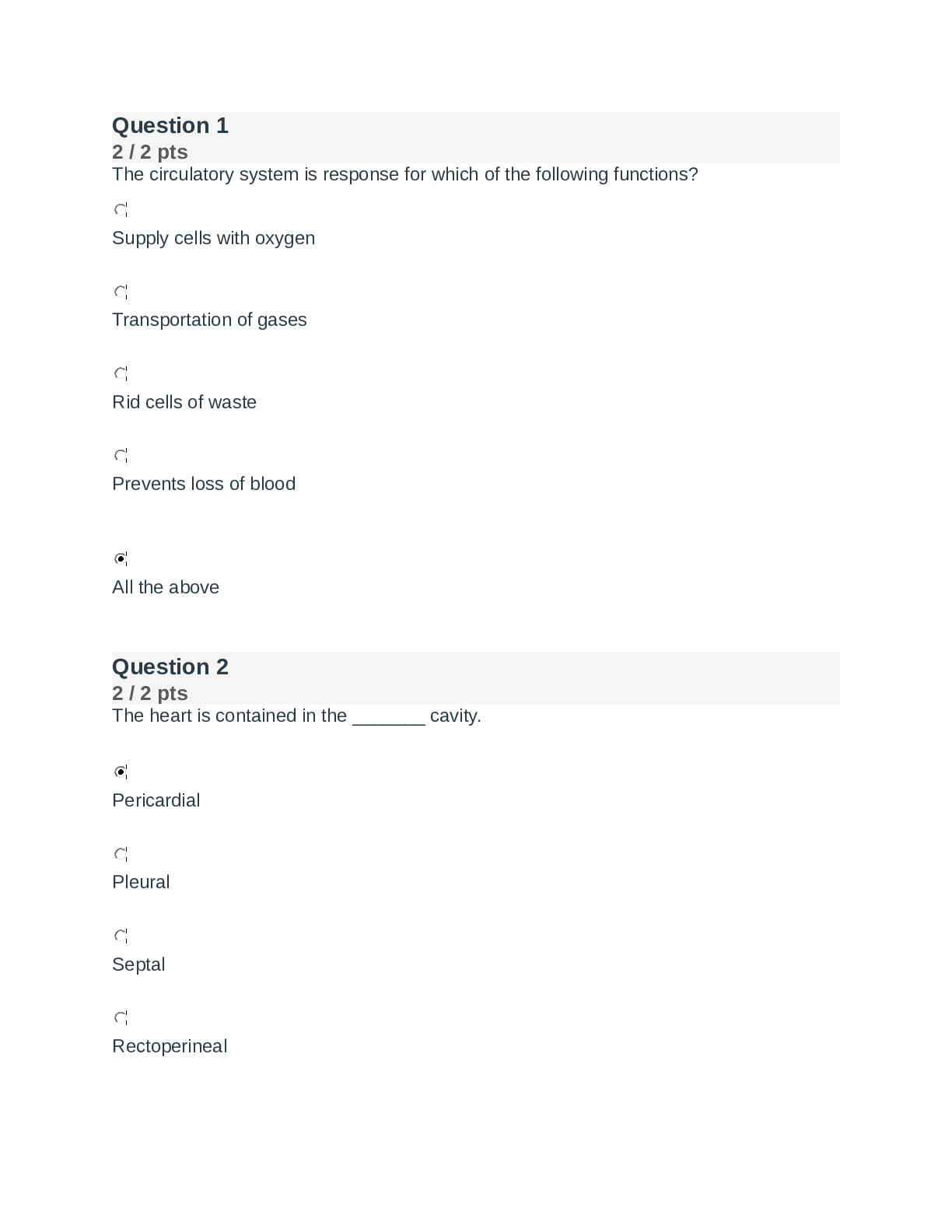
Buy this document to get the full access instantly
Instant Download Access after purchase
Add to cartInstant download
Reviews( 0 )
Document information
Connected school, study & course
About the document
Uploaded On
Dec 07, 2021
Number of pages
30
Written in
Additional information
This document has been written for:
Uploaded
Dec 07, 2021
Downloads
0
Views
49













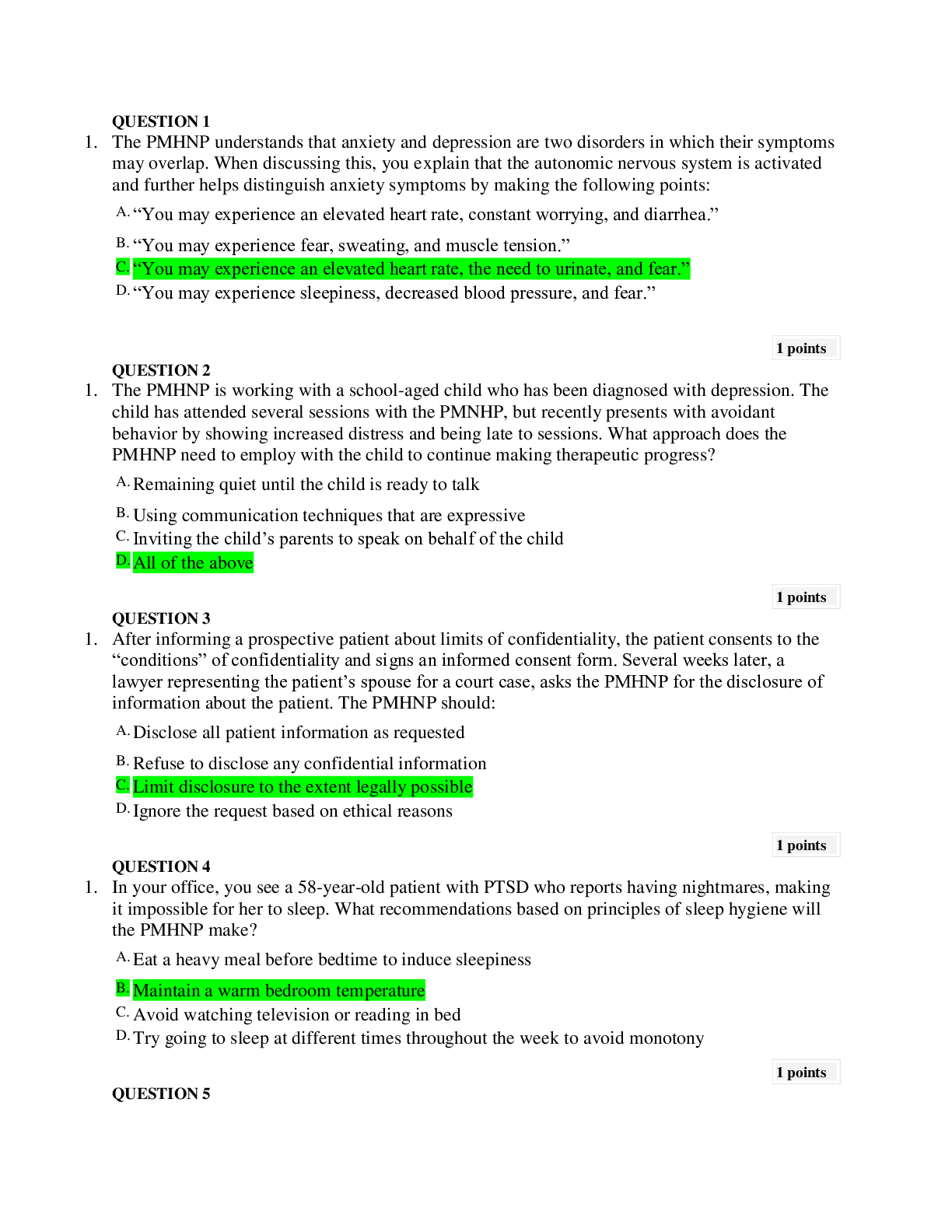
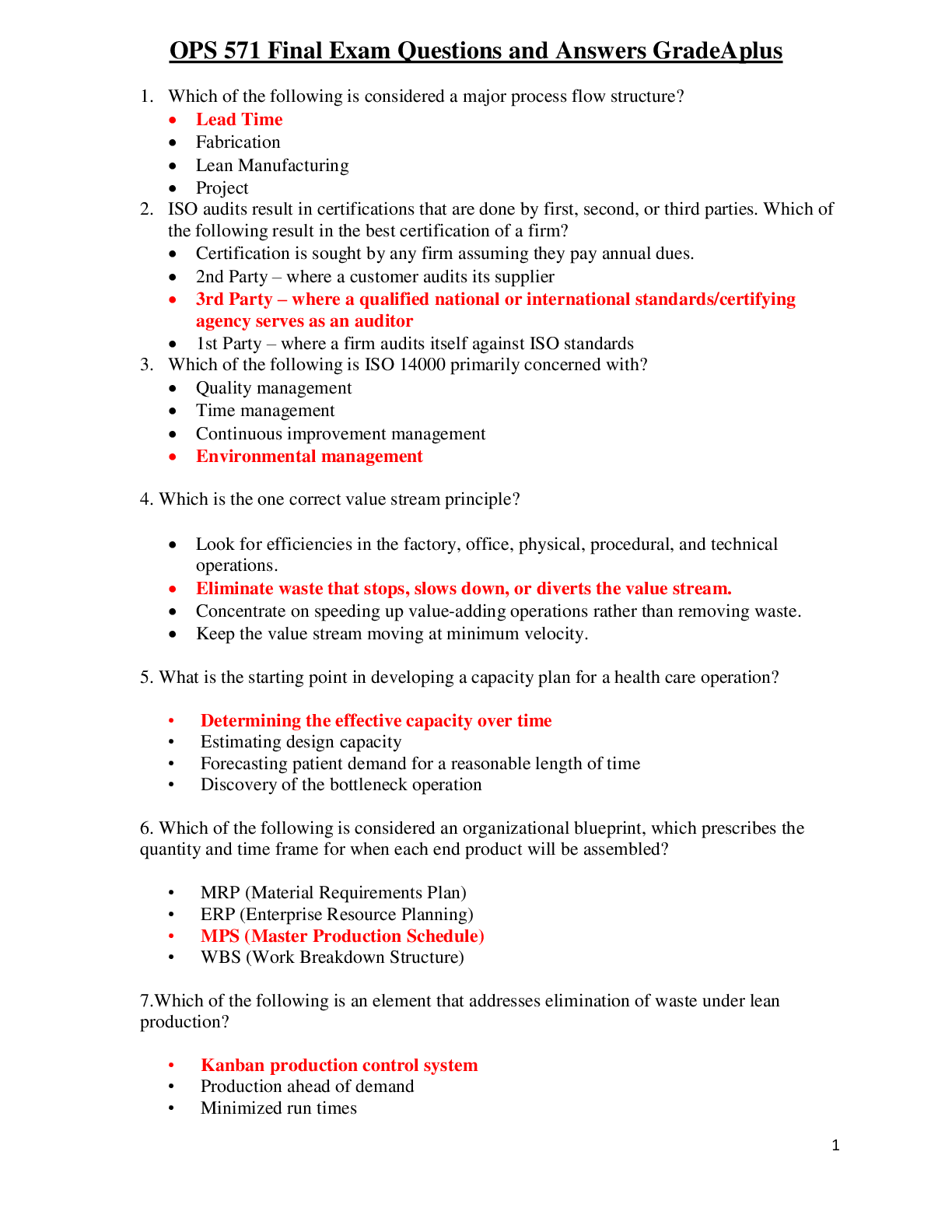
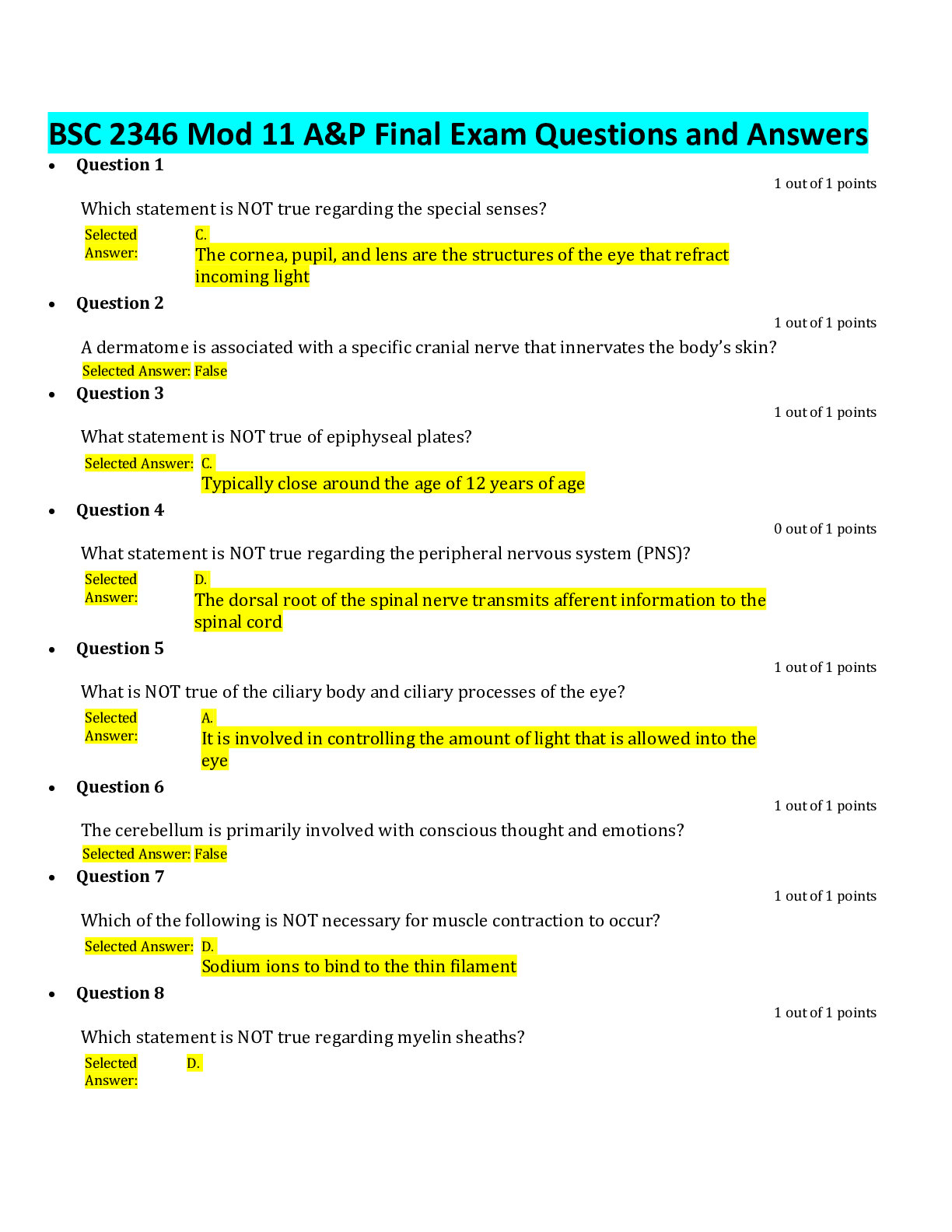


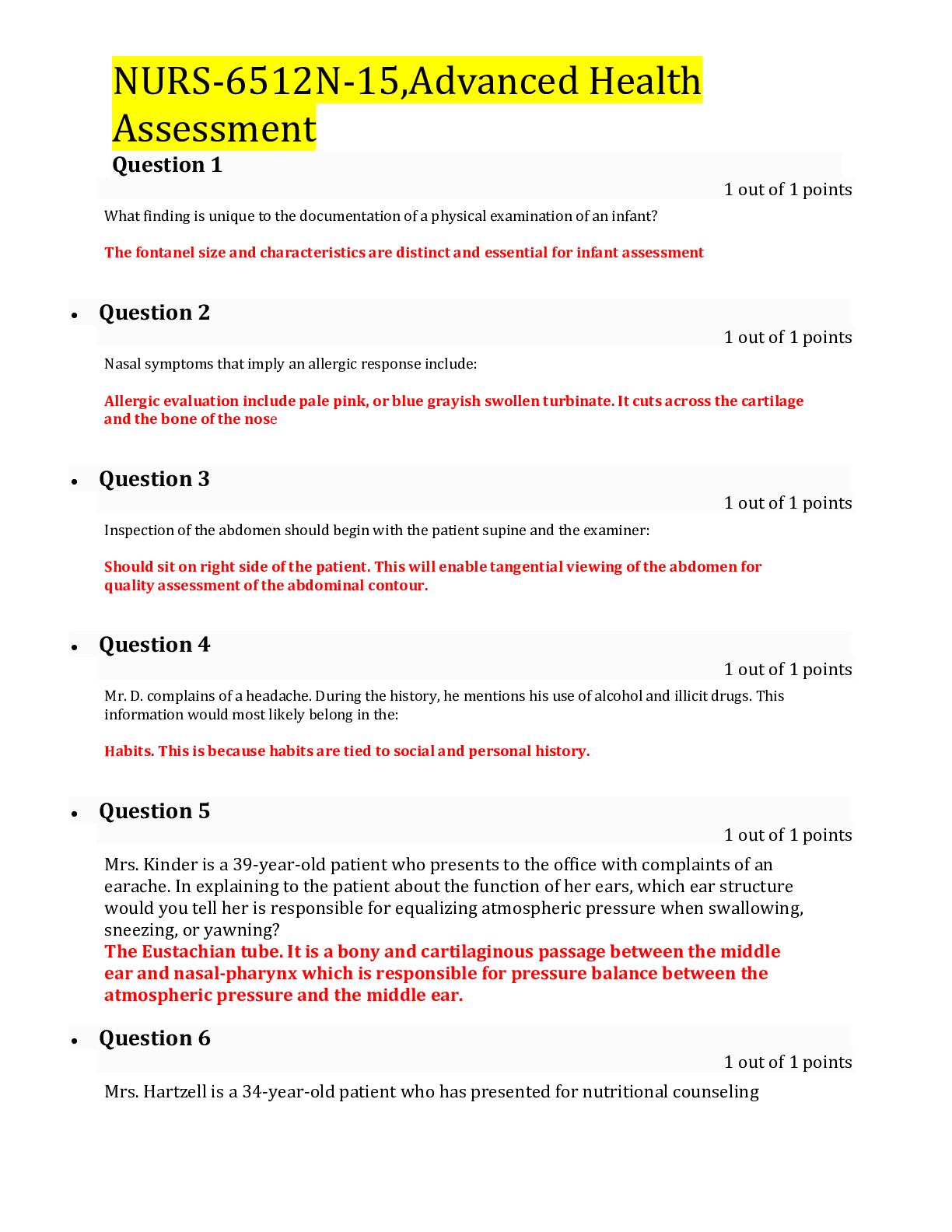
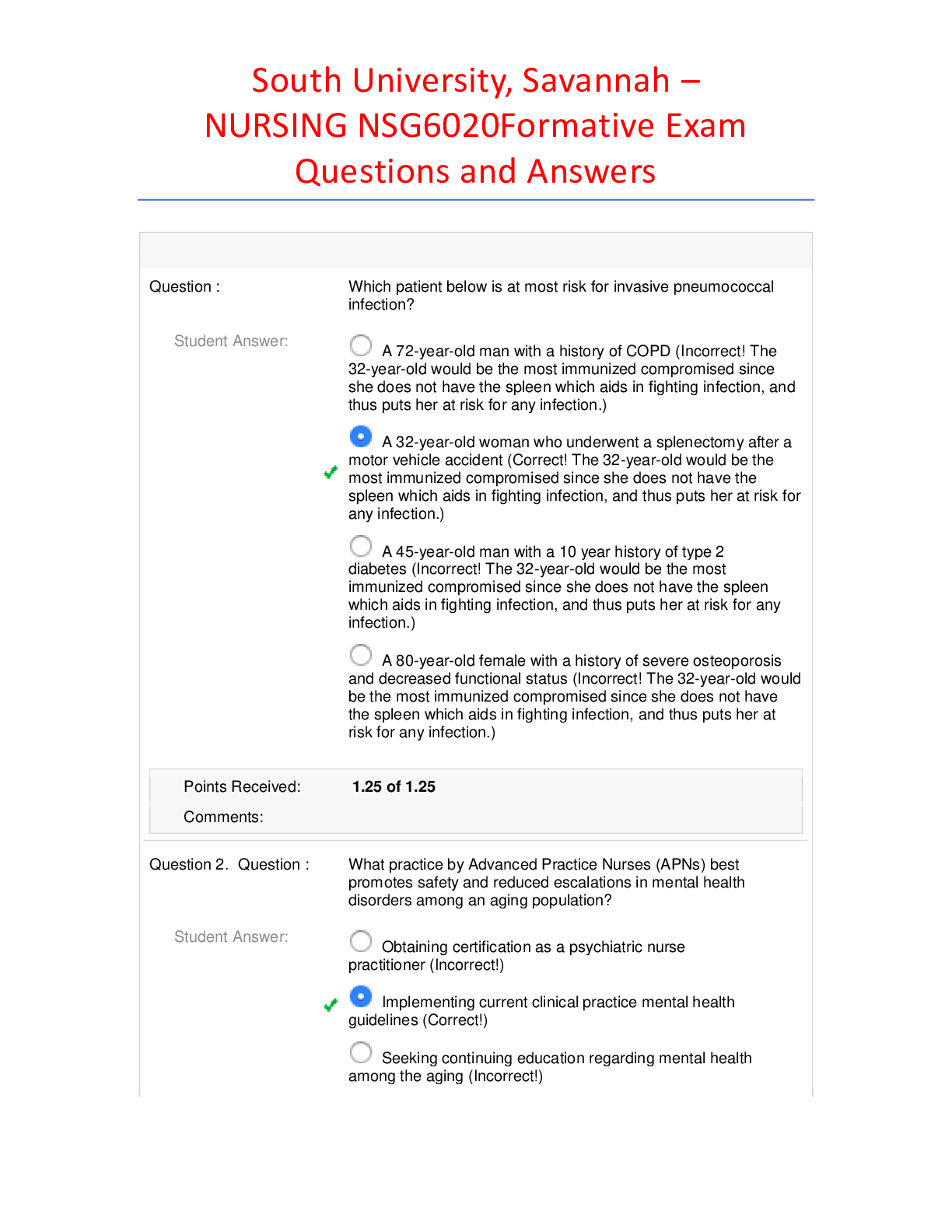
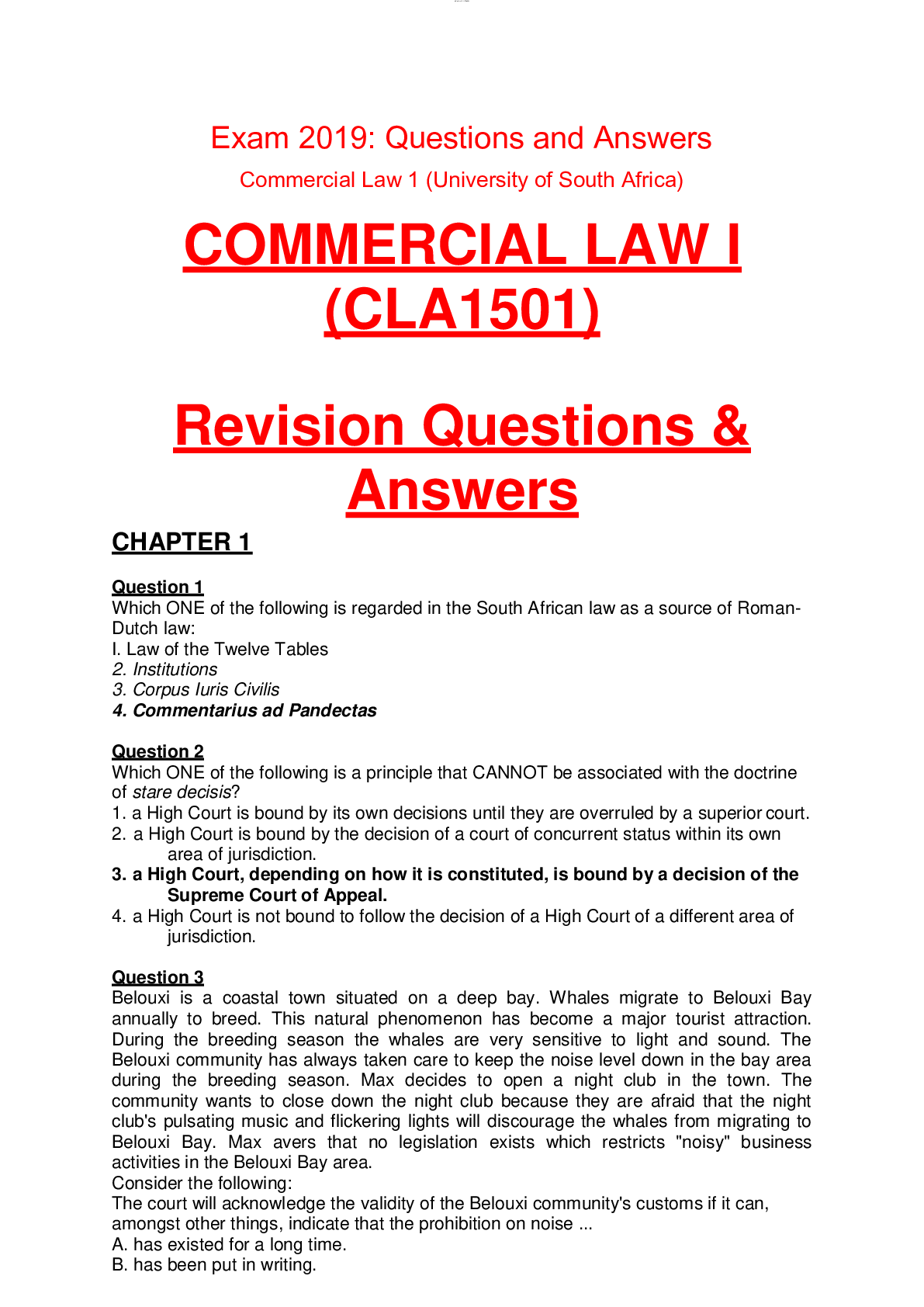

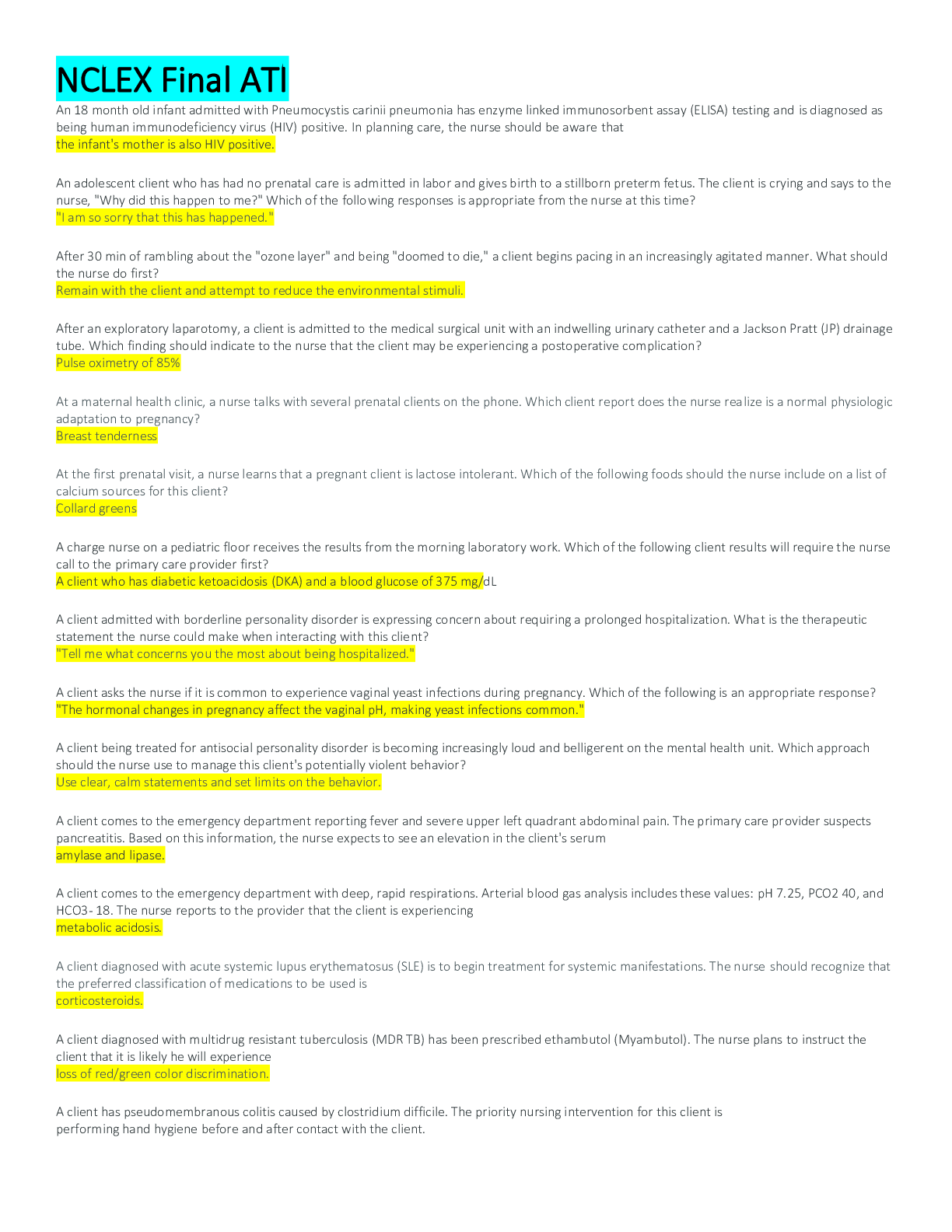
.png)


